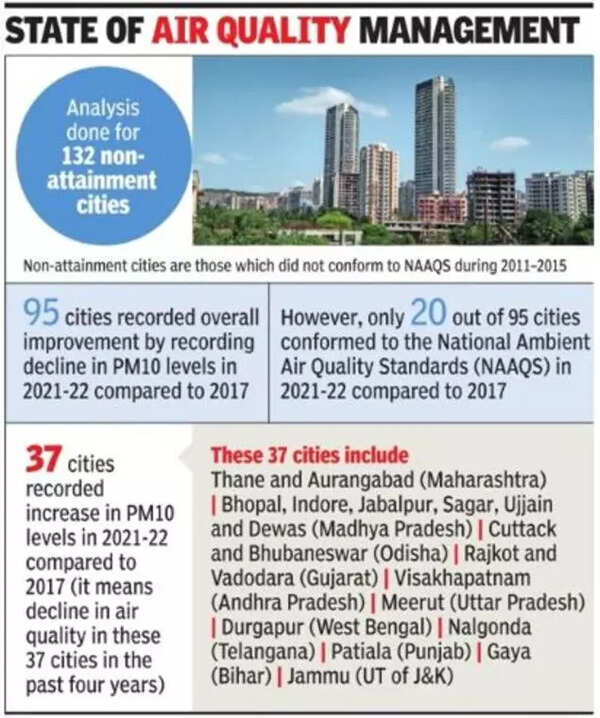The analysis found that 20 of the 95 cities, including Chennai, MaduraiNashik and Chittur even complied with national ambient air quality standards (NAAQS) which set the average annual acceptable limit for PM10 at 60 micrograms per cubic meter (µg / m3).

However, the analysis, carried out by the Ministry of the Environment, did not take into account the other fine and more dangerous particulate matter, PM2. 5, for reasons of uniformity as only PM10 is monitored in all 132 cities. Under the national clean air program (NCAP), the ministry has set targets for a 20-30% reduction in particulate matter concentration by 2024 compared to 2017 levels across the country. Only 43 NCAP cities have an adequate PM2. 5 data for the period 2019-2021.
In addition to Varanasi which reported the most improvement, other cities which showed improvements in PM10 levels during that time include Delhi, Mumbai, Calcutta, Bengaluru, Hyderabad, Noida, Ghaziabad, Lucknow, Kanpur, Agra, Pune, Nagpur, and Chandigarh. . The PM10 concentration in most cities, however, continues to be calculated at much higher levels than the NAAQS targets and limit despite showing improvement.
For example, in Delhi, the level of PM10 decreased from 241 µg / m3 in 2017 to 196 µg / m3 in 2021-22, a reduction of 18%, but it is more than three times the acceptable limit of 60 µg / m3. . In Mumbai, the level of PM10 decreased from 151 µg / m3 in 2017 to 106 µg / m3 in 2021-22. In Calcutta it decreased from 119 µg / m3 in 2017 to 105 µg / m3 in 2021-22.
The CSE has warned that existing clean air action plans that draw hard boundaries around cities for cleanup work fail to address major sources of pollution in the wider orbit.
“The science of the regional influence of pollution has begun to take shape in India. The NCAP has implemented the principle of regional air quality management. But there is no regulatory framework to allow multi-jurisdictional management for aligned action and to establish the upwind and downwind responsibilities of state governments to improve regional air quality, “said Anumita Roychowdhury, executive director of CSE.
